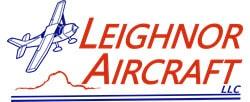- Home
- Knowledge Base
- Flight Operations
- Flight operations with Flight Schedule Pro
Flight operations with Flight Schedule Pro
Welcome to Flight Schedule Pro, an online web application that Leighnor Aircraft uses to manage the schedule of our rental aircraft and other schedulable resources such as instructors and equipment. Flight Schedule Pro also does all the billing services for Leighnor Aircraft.
The purpose and scope of this KB article is to define the terms and operations to new users to Flight Schedule Pro.
Reservation
To book a hotel room for an overnight stay, a reservation must be made. In Flight Schedule Pro, a reservation is a block of time for an aircraft and optionally an instructor or equipment. Just like the hotel analogy, a reservation is for a date and an amount of time.
Making a reservation will reserve that aircraft and other resources for the time the user requested.
Check Out
This operation is where the hotel analogy fails miserably in terms of order. Check Out in Flight Schedule Pro is the operation performed to let Leighnor Aircraft and other users know that you’re dispatching the flight reservation and starting an actual flight operation.
On the Schedule page in Flight Schedule Pro, when a user dispatches a flight, the color of the reservation time block will change to indicate the flight has been dispatched.
Check Out should be performed before starting flight operations. The reason is that the aircraft could potentially have grounding maintenance issues that may not come to light until the pilot attempts to dispatch the flight.
Check In
Check In in Flight Schedule Pro is the operation that terminates a flight and lets Leighnor Aircraft and all other users know that the aircraft has returned to home base and is available for the next flight reservation.
During the Check In process, the user will enter the aircraft’s ending times for Hobbs and Tach. In the case of the flight simulator, only Hobbs time will be entered.
For those users unfamiliar with Hobbs and Tach time, these are meters on the aircraft that record times, typically down to tenths of an hour but in some cases down to hundreds of an hour. Hobbs time is typically on a stand-alone meter that measures the amount of time the aircraft was running and is what all rental charges are based on. Tach time is shown on the aircraft’s tachometer (engine RPM) and the time is calculated based on engine RPM and is used to gauge engine life. All aircraft maintenance times are based on Tach time.
If Tach time is greater than Hobbs time, the user has likely made a mistake in entering time or reading the meters. Tach time is uniformly always less than Hobbs time.
When a flight is checked in to Flight Schedule Pro, the color block and status of the reservation block will change on the schedule page to reflect the flight completed status.
Squawk
This is not the noise a bird makes, a Squawk is the term used within Flight Schedule Pro to describe an aircraft maintenance discrepancy. All pilots have the ability to enter Squawks within Flight Schedule Pro when checking in a flight. The Squawk entry then gets routed to our maintenance team to address the issue.
There are two types of Squawks – a non-grounding Squawk or a grounding Squawk. The type of Squawk being entered is selectable by the pilot. If it’s a safety of flight issue, ground the airplane and let our maintenance team do an inspection! If the issue is not a flight safety issue and more of an annoyance, then enter the Squawk to let Leighnor Aircraft and other users know about the issue.
An example of a grounding Squawk would be things like:
- A flat tire
- The aircraft fails a magneto check on runup
- Any structural damage observed on the aircraft
Non-grounding Squawk examples are:
- Rotating beacon INOP
- One of the passenger head phone jacks INOP
- Carb heat gauge INOP
If there is any question about an aircraft or it’s systems, please enter a Squawk! If Leighnor Aircraft isn’t aware of the problem, we’re unable to fix it. We’d far rather close a Squawk with a “not an issue” resolution code versus being unaware of an actual problem.
